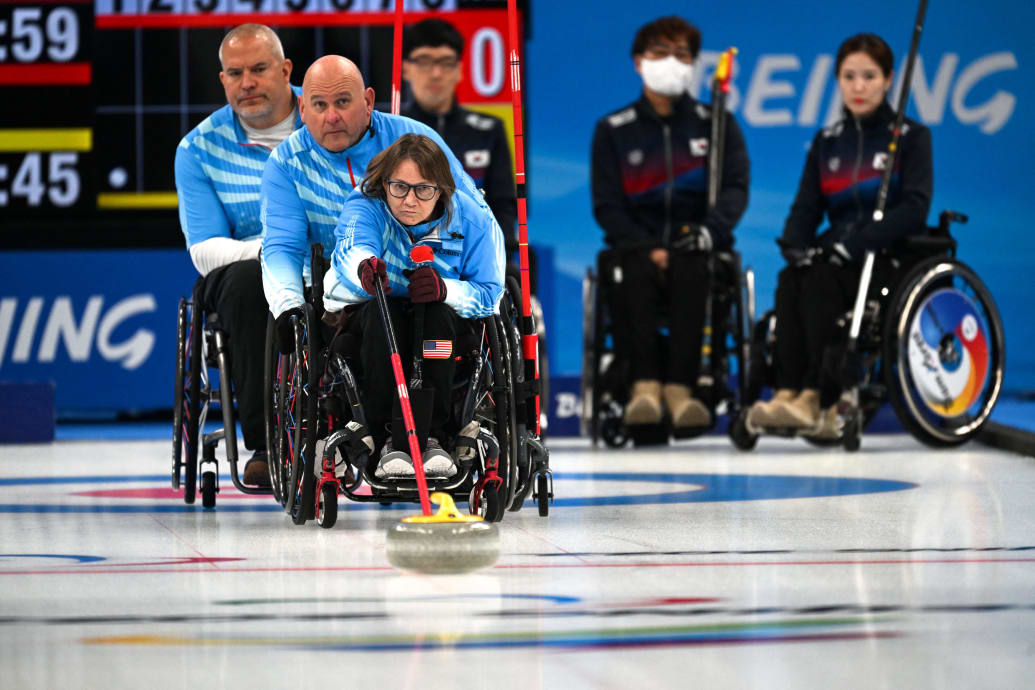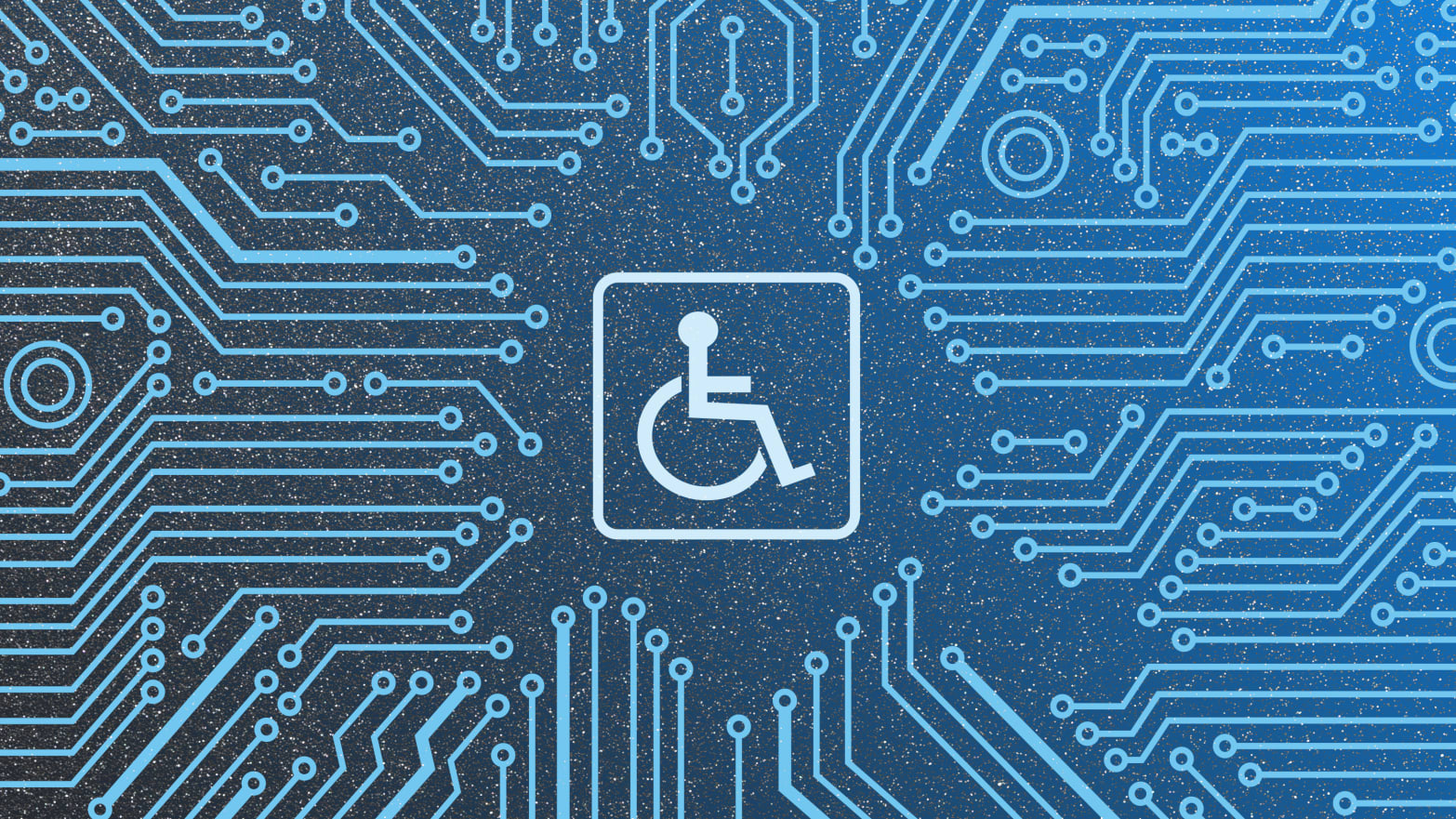“Beep beep.” The high-pitched alarm knotted my empty stomach. Something was wrong with my mobility scooter, just as I was hurrying through downtown Los Angeles to beat the Sunday morning rush at Eggslut. I dreaded it was the battery, but didn’t want to admit it to myself. “I just charged you,” I scoffed under my breath. My stomach was growling for the bacon brioche I’d been salivating for since waking up that morning in November.
Half-way across the intersection at 6th and Hill, I heard it again: “Beep beep.” This time, the power meter drained to red. The scooter stalled, just 10 seconds before the light changed. With the flashing crosswalk signal counting down to my doom, I popped my chair into neutral, and my husband propelled me to the other side. We barely made it across before a caravan of sedans and SUVs whizzed past—never looking down to my eye-level, and never imagining how scary it is to steer the streets from below.
The battery was gone. So, too, were my dreams of Eggslut. Time of death: beep beep o’clock.
I checked my phone for nearby repair and replacement parts. The closest shop was 10 miles away. Even in one of the largest cities in the world, where Grand Central Market boasts every international cuisine only a block away, there were only three wheelchair repair shops. The first was closed down, and the second was closed on Sundays. The third one had the part I needed in stock… and could get it to me on Thursday.
I would be stuck for five days. When my mobility scooter breaks down, I am re-disabled—by an inaccessible world not built for wheelchair users, and by the lack of wheelchair repair stores. There’s a Starbucks on every corner but no mobility batteries to be found. Coffee is not the type of fuel I need.
One new battery, 16.5 screws, and $140 in cash later, “beep beep” was no longer the ominous soundtrack to my life. My mobility scooter was as good as new. I could glide with ease! Relief washed over my body like finally finding a bathroom after holding it for too long.
But the beeps were only part of the disabling. Even when the scooter is running in top shape, lean walkways, pot-holed asphalt, and uneven sidewalks are difficult to navigate on wheels. Stairs, an insurmountable obstacle, seem to be everywhere. Sometimes there’s a pair of steps whose only reason for existing seems to be to keep me out. Every few blocks there’s no curb cut, so I must backtrack and try a different block just to get around.
My mobility is powered by my scooter but slowed down by an inaccessible world. Thirty years after it passed in 1990, the Americans with Disabilities Act (the civil rights law in the U.S. to prohibit discrimination based on disability) is an empty promise, a bounced check with insufficient funds to make the world accessible for us all.
So, it didn’t come as a surprise to learn the “latest” (read: repeat) tech novelty when it comes to mobility-related disabilities isn’t ramps or curb cuts or even flat sidewalks, but a fancy wheelchair that climbs stairs, available when manufacturing is complete at the end of 2021. A brochure describes the electric Segway-style wheelchair, made by Swiss company Scewo, as “futuristic,” “forward-looking technology,” with “intuitive operation” for the “new generation,” which sounds more like a sci-fi trailer than what I need from a wheelchair. The latest tech gadget climbs stairs, connects to an app on your phone, and can be yours for just $40,536.
This is nothing new. Tech companies are always coming up with what they believe to be brilliant innovations for the disability community without so much as consulting us. There are electronic power suits to help people with spinal cord injuries walk. There’s the ASL glove that translates ASL to text or speech while the wearer signs. Braille decoder rings that read text aloud as the user touches the words on the page.
These are examples of what Liz Jackson, founding member of disability advocacy group The Disabled List, calls a “disability dongle: a well-intended elegant, yet useless solution to a problem we never knew we had.”
Sure, it can climb stairs, but can the power chair fit in my Nissan Versa? Does it have a small enough turn radius to navigate cramped restaurants? When its battery breaks down, is there a repair shop nearby that can even fix it, or will I be stuck again for the umpteenth time?
We already know that stairs are inaccessible to wheelchair users, but a wheelchair that climbs them isn’t a sustainable solution. A stair-climbing wheelchair that costs more than I make in a year helps one person. A ramp costs far less and would allow hundreds of people access—not just disabled people with mobility aids. Those with strollers, riding bikes, cruising on rollerblades, or transporting heavy equipment would benefit as well. This moon-rover disability dongle offers access to one wealthy disabled person, instead of providing access to many. It’s classist, elitist propaganda used to make non-disabled people feel inspired about disability technology.
What’s more, many disability dongles never even end up in production. They garner inclusive press for tech companies, who use vague timelines and false hope without delivering on their promises. The disability dongle becomes a red herring—a shiny object to distract people into believing tech companies are working on accessibility. Tech companies announce, the media pounce, and then the companies renounce the projects. Rinse and repeat.

Pamela Wilson of the U.S. curls the stone during the round robin session 16 game of the Beijing 2022 Winter Paralympic Games wheelchair curling competition between South Korea and USA, at the National Aquatics Centre in Beijing on March 10, 2022.
Lillian Suwanrumpha / Getty
It’s the tech version of inspiration porn, objectifying disabled people to make non-disabled people feel good about themselves. It’s something disabled people have been pointing out for a long time, without tech companies so much as noticing.
Perhaps instead of creating a stair-climbing sci-fi gadget that no one asked for, communities could work on implementing accommodations that we did ask for.
What if, instead of having to drive miles to a dedicated wheelchair repair shop, computer and electronics shops carried our batteries? What if rideshare companies picked us up without charging us extra? What if instead of creating new disability dongles, we just enforced ADA?
Tech companies use assistive technology as a type of add-on feature to already existing infrastructure, often after they are sued by disabled people to be included. Instead, they should build with us and for us from the outset.
This isn’t just about inclusivity; it’s also profitable for the companies themselves. Disabled people are 15 percent of the global population. And according to the World Health Organization, more than 2 billion people will need at least one assistive technology device within the next decade. Tech companies should design assistive technology with us to keep up with the growing disabled population in the world. They should hire more disabled people to develop technology that benefits everyone.
Disability is a creative force that invites us to reimagine the world as we know it. The typewriter was created for and by a blind woman to send messages without a scribe. Text messaging was designed for and with deaf people to communicate. Everything from touch screens to audiobooks to the potato peeler to the electric toothbrush was created by and with disabled people. We are creative, imaginative, and innovative because the current world is not built for our body-minds.
Even crossing the street is an impossible task when the world disables our bodies. That’s why, in Singapore, disabled folks use cards to swipe at intersections that allow them more time to cross the intersection. Tech companies should put their money where their “we love diversity” mouth is, by funding projects that center assistive technology and making them affordable to us when they come to market.
You are likely already using assistive technology every day when you check your phone or brush your teeth. When we design with and for disabled people, the whole world benefits. Perhaps instead of dismissing our concerns, listen to us. Instead of designing the next disability dongle, innovate with us.
Imagine the world we can build together when we do.

